|
With the New Year, you may be motivated to make yet another stab at your weight loss attempt or have already felt defeated with the progress you’re making. Clients who come to me often eat very carefully, exercise regularly, and feel like they’re doing everything right, but they feel stuck because the weight is not budging. Does this sound like you? Diet and lifestyle are the obvious factors that are driving the weight merry-go-round, but there are other underlying causes that can throw a wrench in your progress. If you’ve already exhausted yourself with diet and lifestyle and are not getting the results that you’re looking for, then tune in. You may be surprised at what’s keeping you from shedding those extra pounds and causing inflammation in your body.
Find Out What Your Food Triggers Are Most people don’t think of trying a food elimination diet if they’re having difficulty losing weight, but this can be very insightful into uncovering your hidden symptoms and a powerful push in dropping stubborn pounds. Food allergies are often easy to identify because it triggers an extreme reaction. However, identifying food intolerances or sensitivities are not easy because the symptoms can be vague. Helping clients uncover food sensitivities is one area I work with in my clients. And often the results they get are extremely shocking once the food is eliminated and then reintroduced properly. Food sensitivity testing can be useful in some cases, but they can also commonly generate false negative and false positive results. The gold standard for testing is by doing an elimination diet to test your bodies response. If you’re new to an elimination diet and don’t know where to begin, then a good base to start from is by taking the foods out of your diet that you frequently eat every single day. For most people, it’s gluten and dairy. These two foods commonly make their way into every meal, if not all three. They are also two foods that I see that cause the most issues in people. Weight struggles can also be a result of an autoimmune disease. Now if you have an autoimmune condition or have already tried a gluten and dairy-free diet and are still experiencing symptoms, then following the Autoimmune Paleo diet can be very helpful in further determining the foods that could be problematic or unhealthy for you. This diet eliminates nightshade vegetables, grains, eggs, beans, legumes, soy, nuts and seeds, and a few others. Now keep in mind as you’re eliminating these foods, you’re also following a nutrient-rich, anti-inflammatory diet as this is key for any diet you follow. You will also want to strictly avoid these potentially reactive foods for a minimum of two to six weeks, and possibly longer before you introduce each one at a time. For more information on how to effectively do an elimination diet, stay tuned for my next post. The Scoop on Thyroid Dysfunction The health of your thyroid has a direct impact on your metabolism. And when your metabolic function is disrupted, you gain weight that is not easily lost. A very classic symptom of low thyroid function is weight gain despite adhering to a low-calorie diet. The body is throwing up a flag saying, “Pay attention to me.” If you’re one of these people, you may have a thyroid problem. I recommend requesting a full thyroid panel that includes TSH, Free T3, Free T4, Reverse T3, TPO Ab, and TGB Ab. You can develop a thyroid disorder at any age, so routinely checking a full panel is recommended if you have a family history or have many classic thyroid symptoms. Unfortunately, many thyroid disorders don’t get caught early leaving many people suffering. This is because their labs fall within the “normal” range when they get tested, or only a TSH test is ordered. What’s considered “normal” for most thyroid markers in conventional medicine is by far not optimal. If you have thyroid symptoms, but your doctor states that everything looks great with your labs, it’s worth your health to seek out a holistic or functional medicine practitioner that can take a closer look for you and possibly address the conditions that caused the thyroid to slow down if that is indeed the case. Further, a lot of people feel that if they get on thyroid medication they will lose weight, but since it doesn’t address the root cause of the thyroid imbalance, it often doesn’t work. Address Gut Infections If our gut health is poor, we suffer. Most chronic diseases, including obesity and weight gain, benefit greatly when we heal our gut. If you think of your gut in terms of a garden, this will help you get a clearer picture of how important gut health is. For healthy plants, you need healthy soil that is balanced with the proper pH and nutrients so your plants can thrive. The same goes for your gut. If the balance of healthy gut flora is disrupted by things like stress, alcohol, high sugar intake, poor diet, and certain medications like ones to suppress stomach acid and antibiotics, then this will lead to dysbiosis, which is just an imbalance of healthy gut flora. Now if your garden has a poor pH, then it increases your chances of developing invasive weeds and may result in increased problems with disease in your plants. Again, the same goes for our gut. If your healthy flora is disrupted, common infections like parasites, Candida, and small intestinal bacterial overgrowth (SIBO) can easily develop. In my practice, I suspect dysbiosis in anyone with digestive issues, which include symptoms of gas, bloating, constipation, diarrhea, indigestion, and reflux. You can test for gut pathogens, but some of the best functional stool tests can have false negatives, so I tend to rely heavily on symptoms. Cleaning up the diet and adding probiotics and fermented foods can help, but it’s often not the fix, especially if you have a very invasive weed in your garden. A more targeted approach would be warranted using antiparasitic and antifungal herbs to properly restore balance. Address Nutrient Deficiencies Nutrient deficiencies are due to many things including certain medications, stress, diet, lifestyle, and heavy metal toxicities. If we’re deficient in a vitamin or mineral, it can create other deficiencies and also affect other body systems including our hormones and our ability to effectively detox. So, if you’re trying to lose weight and you lack certain nutrients, this can slow down your metabolism. Deficiencies can also create many symptoms that one would likely get you prescribed a drug that would further deplete the very nutrient that caused the symptoms in the first place; It’s a vicious cycle! Vitamin D may be the first deficiency caught because it’s commonly the only vitamin that is included in a health screening. Vitamin D is extremely important to address if deficient or suboptimal as this can affect your ability to lose weight. Others important nutrients to look into include zinc, selenium, vitamin A, iron, magnesium, and vitamin B12 because they are all required for the thyroid to function properly, which affects your metabolism. Symptoms and medication history can be used to determine which supplements are appropriate, but testing is ultimately the best, especially if you continue to struggle with symptoms and weight issues. Sometimes testing individual nutrients is all that is needed, but for a more comprehensive approach, I prefer to check a whole panel. I use SpectraCell’s Micronutrient test as it measures 31 vitamins, minerals, amino/fatty acids, antioxidants, and metabolites at an intracellular level. Mind-Body Interventions It’s next to impossible to avoid most of the stress we encounter in our lives often due to a full-time job and family life, but how we view stress and how we handle it can make a significant difference in how it affects our health. Cortisol is the most powerful stress hormone that is associated with weight gain, especially around the belly. Small cortisol surges are normal and healthy to get us through the day, but chronic surges in cortisol not only contribute to weight gain but the inability to lose it too. If you’re constantly analyzing or thinking about negative events, are in an unhealthy relationship, or are miserable at your job, they are all contributing to your weight. Mind-Body exercises like yoga, Tai Chi, breathwork, meditation, and scheduling daily self –care are ways to attenuate the stress response and reduce the risk of stress-induced diseases. They’re also powerful tools in moving your life in a more positive direction so that you’re in a healthier state to make needed changes to your life. However, just like exercise, you have to do it consistently to experience the benefits, so you will want to find something that you enjoy doing that you can commit to. Stick the Course Once you make up your mind to adhere to a specific health protocol, don’t stray from it. And when you do, get right back to it. This will make for easier adjustments if needed to continue your weight loss journey. If you hit a plateau or get stuck with your progress, seek support to get you moving in the right direction. At the end of the day…just remember that every step you take is a step that is moving you closer to your goal. If you feel you need a little extra guidance, you can contact me. Have you tried various herbs and supplements to boost your immune system during the cold and flu season only for the results to be disappointing? There are hundreds of products advertised for the cold and flu often with basic vitamins and cheap ingredients. Before you waste any more of your money, let’s shift gears a bit and discuss what’s truly an effective solution that concentrates more on lifestyle and less on supplements and incorporates one of my favorite immune-boosting herbs, Echinacea. A holistic approach to illness prevention is way more effective than just relying on a handful of supplements to get you through the germy season. Plus it will do more than just prevent you from getting sick; it will support your general health and wellbeing too. With a little more awareness and self-care this season, you can have a better chance of staying healthy. And even if you do catch something, your body will overcome it quickly. Support your immune system with what I like to call the core fundamentals to health with an extra layer of protection. Echinacea as the Herbal Holy Grail Although there has been a great deal of research done on Echinacea, the results are conflicting. Some show a significant reduction in cold symptoms as well as cold prevention while others do not. It is for this reason I wanted to review what I look for in a high-quality Echinacea supplement because they are not all created equal. Echinacea, also called purple coneflower, has been commonly used for the prevention of colds and flu for hundreds of years. However, most consumers are not aware that Echinacea products vary considerably in their phytochemical makeup due to the plant material used, method of extraction, time of harvest, and overall quality of plant and seed (1). It’s definitely worth your time, money, and health to know what to look out for when purchasing Echinacea. If you’re not getting the results you had hoped for with your Echinacea, then it may be the brand. It’s also best to take Echinacea throughout the cold and flu season rather than at the first sign of symptoms or one to two weeks before travel. Here are some key characteristics to look for when purchasing Echinacea and my go-to brand:
Holistic Lifestyle I get it; we’re all busy! Convenience seems to be the going theme these days if you’re human, but often what is compromised is our health. And that goes for supplements. I always tell my clients that you cannot supplement an unhealthy lifestyle. If you have a toxic body and all you do is supplement hoping for a quick fix, then the results won’t be ideal. Instead, spend your money and time on what works.
And last, even though this is not part of the core fundamentals of health, frequent hand washing with plain soap is one of the top ways to prevent the cold and flu. According to the FDA, plain soap is just as effective as antibacterial soap at eliminating germs. Also, in 2016 the FDA banned 19 antibacterial additives in over-the-counter wash products including the most commonly known ones, triclosan and triclocarban. This is because manufacturers could not prove that these ingredients are safe for long-term use (7). So it’s best to skip antibacterial soaps altogether as they are likely doing more harm than good. Sources
Small intestinal bacterial overgrowth, better known as SIBO, is just as the name implies; it’s an overgrowth of bacteria in the small intestine. Many classic symptoms of irritable bowel syndrome such as gas, bloating, abdominal discomfort, diarrhea, and constipation are identical to that of SIBO, and it has been suggested as a possible cause in IBS. (1) As the bacteria eat the food we eat and ferment the high carbohydrate component of the meal, this fermentation is what causes the symptoms. SIBO causes inflammation within the small intestines that may interfere with the absorption of nutrients leading to the symptoms associated with SIBO as well as nutrient deficiencies specifically of the fat-soluble vitamins A, D, and E. (2) SIBO can often float under the radar and be challenging to identify as it does not always present itself in a clear picture. The symptoms caused by SIBO can be very mild, or they can be severe and cause great distress for the individual. My Story Personally, there have been many layers that I have had to peel back and examine in my health journey due to having Hashimoto's, and SIBO was one of them. My symptoms were frequent and sometimes severe bloating, mood swings, extreme fatigue, weight loss, anxiety, and just a general feeling of being run over by a semi-truck. I ran a complete stool analysis at the time, which came back normal. My symptoms started shortly after having my son coupled with a huge career move for both my husband and I. I just correlated it to significant hormonal shifts, adjustment to motherhood, and financial stress of starting new businesses. Being a new mom is naturally exhausting, and I know it was truly the spark that set off my Hashimoto's. Two things that are known to affect gut motility are stress and autoimmune disease, and the most common reason SIBO develops is from a motility issue. The function in the gut that sweeps residual debris through the GI tract, known as the migrating motor complex (MMC), often does not work efficiently in motility disorders, and bacteria may not be moved from the proximal bowel to the colon. I had both of those going against me, but I kept making myself believe that all my symptoms were normal and would resolve once everything calmed down. The results on the top are my first lactulose breath test (LBT) that confirm SIBO, and the results on the bottom are the repeat LBT after completing a 3-week elemental diet protocol. As you can see, the repeat is normal. My results were not as high as some others that I have seen, but my symptoms in conjunction with my results were enough confirmation for me. Diagnosis of SIBO SIBO is commonly diagnosed using a breath test with a lactulose or glucose substrate. It is noninvasive and low cost, which makes it the preferred route for testing. The individual will drink either substrate, then blow into a bag that has a vial attached to capture various breath samples over a defined period. Lactulose is a nonabsorbable disaccharide that is metabolized to short-chain fatty acids in the colon and glucose is a monosaccharide that is completely absorbed in the proximal small intestine. In the presence of SIBO, fermentation of either one produce gases that can be measured in a breath test. Another way of diagnosing SIBO involves obtaining a culture of an aspirate from the jejunum. This method is invasive, costly, and it is not able to reach the distal small bowel, which is why it is not favored in clinical practice. (3) Etiology of SIBO It is best to understand why SIBO developed in the first place to be able to eradicate it and prevent a reoccurrence. If SIBO was eradicated, but it came back, then it’s possible that the cause was never addressed. There are many risk factors and causes for SIBO, and this is by no means an exhaustive list, but the following are some of the most well-known:
Treatment Eradicating SIBO can be challenging due to the underlying issues that caused it and how resistance the bacteria can be to treatment. Some cases clear after one protocol while others require a variety of them over months to years. There is no universally accepted gold standard to treatment, but it is recommended to switch it up if the previous therapy did not work. It's also important to note that there may be other viruses, bacteria, toxins, or pathogens present that are keeping you from clearing SIBO, so patience is key to being successful with whatever route you and your practitioner choose. The antimicrobials used to restore microbial balance are either antibiotics or herbal antimicrobials. Research has shown that herbal antibiotics are at least as effective as Rifaximin (common antibiotic for SIBO) for resolution of SIBO by lactulose breath test. The other treatment option that has been shown to be highly effective at normalizing microbial balance is with an elemental diet. (10) If I have a client that presents with SIBO and they have not tried anything else before seeing me, I typically will try the herbal route first because it allows me not just to address SIBO, but also Candida and other pathogens that commonly accompany it. Elemental Diet If someone has a severe case of SIBO or they have tried other modalities, then I will typically recommend an elemental diet. An elemental diet is the most difficult to do, and it is not for everyone, but it is another great option especially for someone who has severe gut issues or if antimicrobials were unsuccessful. An elemental diet is a medical food diet where the carbohydrates, proteins, and fats are in a readily assimilated form that's easily absorbed into the proximal small bowel, which requires little to no digestive effort. An elemental diet frees up the nutrients so that they can be fully absorbed, it allows the gut to rest and heal, and it doesn’t allow for any fermentation to occur in the small intestines, which cuts off the food source for the overgrowth of bacteria in the small intestines. Typically, an elemental diet is used short-term in individuals with moderate to severe gastrointestinal dysfunction for 14-21 days. Specifically for SIBO, it's used for 2-3 weeks max. Because this will be your sole source of nutrition during this period, you need to know your caloric needs to know how much to drink throughout the day. This will be calculated by your practitioner and adjusted as needed throughout your protocol. If you choose to do it on your own, then a general rule of thumb is 25-30 calories per kilogram of body weight, though each individual's needs will ultimately vary. I was ecstatic to have eradicated SIBO using only an elemental diet. However, my bloating improved, but my energy and some of my other symptoms did not, which was a sign that there was still a lot of work left to do with my health. This is often the case with a lot of people dealing with SIBO because you still need to address the other health issues that allowed the bacteria to overgrow in the first place. Recommended Product for Elemental Diet If you’re interested in making your elemental drink, here is a recipe that is available on siboinfo.com. I have never tasted it, but I have heard it's not the most pleasant. The only company that makes an elemental diet that I currently recommend is Physicians' Elemental Diet by Integrative Therapeutics, which is what I used for my SIBO. There are other brands available, but due to the their ingredients, I don't recommend them. Integrative Therapeutics recently came out with a revised dextrose-free version that is great for those dealing with Candida, fungal overgrowth or who have a glucose sensitivity. The product is called Physicians’ Elemental Diet Dextrose-Free, and it contains 10 grams less sugar per serving than the original Physicians’ Elemental Diet as it substitutes maltodextrin in place of dextrose. I prefer this form since it's not as sweet, is lower in carbohydrates, and you don't risk worsening any underlying fungal issues that you may not even be aware of. Is an Elemental Diet Right For You? As a dietitian in functional nutrition in my own healing journey, I have used myself as a guinea pig to test out the protocols, diets, and detoxes that I use in practice. There are a couple of reasons I chose the elemental diet. For one, I wanted to try the elemental diet so that I could know firsthand what my clients may have to go through from everything to the physical aspect of not eating to the emotional aspect that comes with the diet. The second reason was that I wanted an easy route. This included a break from cooking, preparing, and thinking about food. It’s important to assess where you’re currently at so that you can choose what’s best for you. A minimum of two weeks on an elemental diet is recommended, followed by retesting, and if positive, another week on the diet is typically suggested before retesting. I ended up doing it for three weeks before testing so that I did not have to potentially retest, but I wouldn't recommend that for everyone. Throughout this diet, you will only be drinking water, some herbal teas, the elemental drink, and that’s about it. Symptoms that may be experienced include emotional, flu-like, nausea, rash, fatigue, or headaches. I had many symptoms surface while on the elemental diet. I was way more emotional and sensitive than I ever was and this was the hardest part for me. I think it’s important to note that I was also taking care of my one-year-old son who was teething and not sleeping well all while my husband was out of town for part of it. I kept a journal while on the elemental diet so that I could keep track of my progress. My energy was not the greatest, but that could have been due to the lack of sleep from my son. Surprisingly, I was not hungry throughout the entire three-week period. I also lost a total of five pounds during it, and my bloating was completely gone, which isn’t surprising since my stomach was on vacation. If you’re not able to take sick time from work in case the need for it arises, then an elemental diet may not be the best choice. There can be a few tough days where you may want a little flexibility in your schedule. I also don’t recommend this diet for people who have severe adrenal or blood sugar issues and who are malnourished or have an eating disorder. Tips on an Elemental Diet
Post Treatment Once SIBO is eradicated, it is important to follow a modified diet for several months that is low in FODMAPS to prevent a reoccurrence. It is also recommended to take a motility agent that will help to keep things moving along in the GI tract for several months as well. Working with a practitioner who has experience with SIBO is important as treatment should be individualized according to the client’s history and test results. For some people, getting a diagnosis of SIBO and successfully eradicating it is a game changer in their health, but for others, it just means that more work needs to be done. Further Info. If you're interested in learning more about the elemental diet and SIBO, I recommend listening to the podcast with Dr. Lela Altman. Sources
Lomatium dissectum is a powerful healing herb that is not commonly talked about nor even heard of by most. It is for this reason, I became intrigued with the herb and wanted to learn more. I commonly use and test the very supplements, herbs, and functional labs that I recommend to my clients, not only because I feel personal experience is important, but also because of the path that I’ve been on in my own health journey. Studies demonstrate Lomatium’s effectiveness with treating influenza A and certain viruses like rotavirus, and herbalist with extensive experience with Lomatium have also used it in many other ailments from UTIs to tooth abscesses. My Experience My first experience with Lomatium was when I was on vacation with my son who had come down with a cold the second day we were there. I started to experience cold symptoms two days later, and the last thing I wanted was a cold on vacation, especially knowing I had to fly by myself with my rambunctious toddler in just a few short days. And just before leaving for vacation, we had a three to four week stretch of one virus being passed around to the next between my husband, son, and myself, followed by a cold in my husband, so quite frankly I was over illness at this point. I knew I needed to act quickly. Lomatium was one of the first herbs that I thought of because it was fresh on my mind after learning about it just prior to our trip, so I ordered it online for 2-day delivery. I wish I would have thought about it earlier for the viral episode going around in our home as it may have helped. Fortunately, I was staying at our lake house that had a sauna, so I hit up that heat machine at least once to twice a day and took an immune support formula with a blend of medicinal mushrooms that I had on hand to try to get ahead of it. When the Lomatium arrived, I still felt like I was fighting it as I could feel it in my chest and head, but I didn’t feel that it was progressing. I knew I was on the right track with my current plan, so when the Lomatium arrived, I incorporated it at a dose of 10 drops two times a day for two days, then increased it to 25 drops, twice a day. However, I would suggest staying at the lower dose for at least a week before advancing to test your tolerance. By the third day of use I felt great with no symptoms! I can’t tell you how pumped I was about this! I’m unsure if it was the Lomatium by itself that allowed me not to get sick or if it was the combination of therapies that did it; whatever it was, it worked for me, and it was what my body needed to up the defenses and overcome quickly. I have continued to take Lomatium as I have incorporated it into an anti-viral protocol that I’m doing due to a reoccurring rash that appears on my chest whenever I get sick. One significant thing that I have noticed since being on it is an improvement in my energy, which is always a good sign. How Lomatium Became Known Lomatium, also known as fernleaf biscuitroot and desert parsley, is a perennial wildflower native to the western United States. The Native Americans used this plant as both a food and medicine and scientific studies have shown it to have antiviral and antibacterial properties. The root extracts were shown to inhibit rotavirus, Mycobacterium tuberculosis, and Mycobacterium avium. (1) Lomatium dissectum became widely popular after the influenza pandemic of 1916-1918 when a physician from Nevada reported a complete lack of influenza mortality in a Native American group taking the herb. (2) Uses In one study, one hundred extracts of medicinal plants were screened for antiviral activity against seven viruses. Lomatium dissectum root extract was found to completely inhibit the cytopathic effects of rotavirus, which is one of the major infectious diseases in the world that causes gastroenteritis. (3) In another study, Lomatium dissectum root extract was shown to have an inhibitory effect on CXCL10 secretion, a chemokine implicated in the pathogenesis of influenza A infection. The primary cause of morbidity and mortality from influenza is cytokine and chemokine dysregulation that may occur during the immune response and not by the virus itself. (4) Herbalist familiar practicing with Lomatium, also claim that it has many other medicinal uses including, but not limited to, Candida, EBV, bacterial infections, strep infections, respiratory infections as well as prevention for the common cold and flu. (5). Detox Rash It should be noted that before you start taking Lomatium, you need to be aware of the rare one-time detox rash that may occur in some people taking it for the first time. The rash typically shows up about five to seven days after taking Lomatium, and it’s similar in appearance to measles. It can appear randomly on different places of the body and then spread to cover the whole body. Some speculate that it’s a healing rash that is pulling out viral and fungal infections stuck in the tissues. I can believe this because I’ve experienced a “healing crisis” before with homeopathy as my tonsils literally turned black for a few days from a remedy that I was on for a recurring chronic sore throat when I was younger. After that, I never had them again. The image below is one I took of my arm after being on Lomatium for seven days. My case is not common as it didn't itch, was contained to my arm, and was present for about two weeks. The rash is not harmful, it can just be uncomfortable and probably enough for one to not want to use it again. But if you can get past the discomfort for a couple of days, then I feel there are more rewards associated with it than risks. Some people can get a light rash that only covers a small area on their body and is gone typically in two to three days, but most cases are the full body version that may make sleep restless for a couple of nights. (5) It’s advised to start with a low dose of 5-10 drops in water once a day for the first week when taking for the first time. More information regarding the rash, ways to minimize or to potentially avoid it, and uses of Lomatium can be found on Barlow Herbal. MunityBoost by Barlow Herbal was specifically developed to help prevent the one-time rash that can develop with using Lomatium for the first time. They also have a wonderful team that will help to answer any questions that you may have regarding its use. Before beginning an herbal protocol, you should always consult with a health practitioner as there are interactions with certain medications and dosages may vary. References
I recently watched the Lyme Summit #3 produced by Dr. Jay Davidson and was so impressed with the amount of information and the diversity of speakers included in it that I had to share some of the knowledge nuggets that I learned. In the summit, Dr. Jay Davidson covers the latest testing and treatments on Lyme. If you suspect Lyme, are dealing with Lyme, or are not seeing resolution of your chronic symptoms, I encourage you to check out this summit as it is a great resource for information.
Interestingly, Lyme disease affects more people annually than breast cancer. Many people can live their lives suffering from Lyme disease and not even know that they have it since symptoms may be few and lack the obvious like joint pain that is commonly associated with the disease. It’s known as the “Great Imitator” because the symptoms can mimic almost any chronic condition causing the individual to be misdiagnosed. If you feel you’re not at risk for Lyme disease given your location, think again. Lyme disease is more prevalent in northeastern states, but cases of Lyme have been reported in all 50 states. Most people associate getting the bulls-eye rash with Lyme disease, but that does not commonly occur. Early symptoms can result in flu-like symptoms and fatigue within a week or two, and since most people forget about being bit by a tick by then, or don’t even think to associate their symptoms to the tick bite, correlation can be very hard to discern. It is also not uncommon for some people to not experience any symptoms until a strong emotional event or trauma occurs much later in life, which can trigger an immune response and causes the Lyme bacteria to become active. Symptoms vary across the board and many symptoms can often be mislabeled as another chronic disease or autoimmune diagnosis like Fibromyalgia, MS, Parkinson’s, ALS, and chronic fatigue syndrome. Here is a list of common symptoms to look out for. Common symptoms:
Lyme and Co-infections Lyme disease is caused by a type of bacterium referred to as a spirochete called Borrelia burgdorferi. Once a person is infected with this type of bacterium, the spiral-shaped spirochete can invade various parts of the body, including the brain. Co-infections are common with Lyme since the infected host can harbor other parasites, bacteria, fungi, and viruses along with it. A few of the co-infections associated with Lyme include the following:
Testing Testing for Lyme disease can be very complicated, expensive, and can often result in false negatives. If you suspect Lyme disease and have received a negative from a test, please don’t discount it. No Lyme test is 100% accurate. You may need to do a handful of other tests before a diagnosis of Lyme disease can be confirmed. Working with a Lyme literate medical doctor (LLMD) or another practitioner with experience in treating Lyme is highly recommended as it may involve a thorough history and exam before a definite diagnosis can be made. The standard two-step lab test recommended by the CDC is the most well- known test by physicians and is the most commonly used method of testing. It looks at antibodies the immune system produced after coming into contact with the Lyme bacteria. However, many people can have Lyme disease but not have antibodies that are being produced or picked up at the time of testing. This test may be covered by insurance and is more affordable than some of the advanced Lyme tests depending on your insurance, so it can be a good place to start. The following is by no means a comprehensive list of testing options for Lyme (as there are many), but rather some of the tests that the experts in the summit referenced: IGeneX- Uses advanced techniques for Lyme testing and offers a broad range of panels to choose from. It’s one of the most popular tests amongst healthcare practitioners that I have found as it has gained a great track record for accuracy. A physician order is required for this test. DNA Connexions- Uses advanced techniques for Lyme testing. One Lyme panel offered, which tests for 4 different genes that are the most common cause of Lyme disease along with 8 common Lyme disease co-infectors. You can test without a physician’s order. VCSTest- Visual contrast sensitivity test is a test created by Dr. Shoemaker which measures your ability to see details at low contrast levels. It is not used as diagnostic tool for a specific health condition, but a positive result could indicate exposure to mold or biotoxins like Lyme along with a number of other different conditions. It does not require a physician’s order and can be taken from your computer or mobile device. When I did a little research on the test, it looked like it would be a good test to re-take to monitor the progress of treatment after a diagnosis of Lyme was confirmed. ART- Autonomic response testing developed by Dr. Klinghardt is a form of biofeedback testing that uses kinesiology both with the diagnoses and treatment of Lyme disease. This specific form of testing can pick up on underlying issues that are commonly missed by conventional testing if carried out by a trained practitioner. Before testing Testing for Lyme disease is difficult because the Borrelia bacteria do not typically hang out in the blood. Because of this, provocation before blood or urine testing is recommended. Deep tissue massage or exercise were suggested that will help to provoke the Lyme bacterium from the tissues. One technique that Dr. Klinghardt has found to be very successful and one that he uses in clinic involve the use of ultrasound over areas where Lyme is suspected. The ultrasound will help to draw out the microbes within the tissues and bring them into circulation prior to collecting urine using a PCR test for Lyme. Another interesting technique noted was mentioned by Dr. Rudy Mueller. He uses glutathione as a binder to the mycotoxin, similar to using a chelating agent like DMSA for heavy metals, so that it can liberate it from the tissues and pull it into circulation. Genes Genetic analysis is becoming a popular trend for improving treatment in health. There are a handful of genetic variants that may impair critical functions in the body relating to detoxification and nutrition, so knowing what your genetic variants are or SNPs can help to better personalize treatment with Lyme disease. Some may feel that their genes determine their destiny, but this is far from the case! It is important to note that environment and circumstances trump genes, and genes can be turned on and off, which is known as epigenetics. Dr. Rob Miller is a genetics expert who uses genetic testing like 23 and me and ancestry.com to look at genetics for detox support. He started seeing a lot of Lyme patient’s and realized there were unique genetic components to all of them that were similar. He covered a myriad of information that would help to personalize treatment for a Lyme patient based on their genetic report. More information can be obtained from his site to learn more. He spoke quite a bit on the HFE 1 and the GAD genes. HFE 1 gene is involved with how we absorb iron. He noticed that this gene was much higher in those that could not beat Lyme disease no matter what they tried and those with this defect should be very careful with iron supplementation. The GAD gene takes glutamate and converts it to GABA. If a Lyme patient has too many GAD genes and they are given GABA for anxiety, they could potentially feel worse, so he suggested that it would be better to start on a low dose of glutamine instead and slowly increase the dose. Mold Mold exposure can be a trigger for Lyme and co-infections. It can also be the reason that you are not getting well if you have a chronic illness like Lyme disease. Insomnia, GI discomfort, irritability, nose bleeds, and headaches are just a few symptoms of mold. Someone can be exposed to mold and not have any issues, but it can eventually be set off with certain triggers like poor diet, emotional and physical stressors, and other environmental toxins. Mold can be hidden in areas such as bathrooms, HVAC systems, kitchens, carpeting, laundry rooms, and basements. Green Home Supply was a company recommended by Dr. Scott Richmond that can test your home for mold, and they also sell specialized enzymatic products for remediation. There are many labs that can determine exposure to mold, but the Great Plains Mycotox test is one in particular that Dr. Richmond mentioned. It screens for different mycotoxins using a sample of urine. Great Plains is a company I use for my clients, and they are definitely well known for advanced testing in chronic illness. If someone is sensitive to herbs and other treatments, he definitely considers mold to be an issue. When purchasing a new house, he suggested hiring a certified mold inspector to look at dust samples, air quality samples, environmental factors like radon, and signs of water damage, and be sure to ask the owners for disclosure. Dietary Approaches Building up the health of the gut is essential to ensure adequate recovery. Eliminating inflammatory foods, difficult to digest foods, and any known food allergens or sensitivities goes right along with this. A whole food, Paleo approach to diet can be very beneficial to supporting the immune system and to lowering inflammation. Most experts agree that eliminating inflammatory foods like grains and refined sugar can be very beneficial for boosting immunity. Sarah Ballantyne (a.k.a The Paleo Mom) reviewed a wealth of information on the Paleo diet pertaining specifically to gut health. A plant-based Ketogenic diet, which Dr. David Jockers did a very interesting segment on, has also shown to benefit those suffering from Lyme disease. However, a Ketogenic diet is not for everyone, and it should always be individualized as with any diet. Darren Schmidt talked about the importance of detoxing and addressing any mold issues before going into ketosis and how cycling in and out of ketosis is the ideal route to go. Address Lyme and Co-Infections Last If someone is dealing with Lyme disease, they are almost guaranteed to be dealing with other toxicities, viruses, infections, and pathogens. Healing the gut, adrenals, and supporting the organs of elimination should be addressed first. Drainage was a big topic covered, which includes supporting the liver, gallbladder, kidneys, colon, and lymphatics. Nick Ellenson discussed doing coffee enemas several times a week for liver/gallbladder and detox support. More information including the exact preparation and brands of coffee to use for the coffee enemas can be found here. Homeopathy, acupuncture, ionic foot baths, and castor oil packs were a few other drainage modalities mentioned. Removing parasites after addressing the gut and drainage also takes high priority as it can be extremely difficult to heal from Lyme with them present. Parasites can harbor Candida, heavy metals, and other infections, and they can also clog up the bile ducts, because of this, it’s crucial to get them out to begin to heal. After a parasite infection is removed, then one can begin to work on other areas like heavy metal toxicity, mold, and viruses if present, then begin moving towards tackling Lyme and other co-infections last. CBD Oil for Symptom Management Philip Blair discussed the use of CBD oil from hemp for rebalancing the endocannabinoid system and for the management of symptoms related to Lyme disease like pain, anxiety, and insomnia. He stated that people who took antibiotics for Lyme but still had symptoms are due to the cytokines caused by Lyme disease. CBD oil can help because research shows that it crosses the blood-brain barrier and calms inflammation in the brain. He recommended specifically the Elixinol brand and stated that it is best to take all forms under the tongue (gargled and swirled around in mouth) for maximum absorption and benefit. An initial dose of 15 mg 2 times a day was suggested, which can then be titrated up until results noted. He also mentioned that Omega-3s are an important component of healing the endocannabinoid system, so cod liver and fish oil, walnuts, flax seeds, and egg yolks are good sources to include in the diet. Emotional Healing When you’re dealing with any chronic illness, it’s important to address not only the physical side but also the emotional and spiritual side so that the body has a better chance of healing. Emotional traumas can often be the trigger for the disease, so it’s not just about genetics and lifestyle. Trina Hammock states that Lyme disease on the emotional level is set off by a separation conflict by your family or clan, and a great deal of healing can occur once this is resolved. Emotional trauma will show up in different parts of the brain, which Hammock states look like tree rings that you can see on a no-contrast CT. If you have similar patterns or conflicts resurfacing in your life, she states that your subconscious will bring them back up to get you to resolve them. Emotional work takes time, just like healing does, but once you move through it, you will feel more at peace with life and your gains in health will be noticed. Disclaimer: The information was taken as notes during the summit and is not intended to serve as medical advice. ,Spring is almost here! And in the plant world, that means full bloom! As I am planning new additions to my garden and spending more time perusing the farmers market now that the weather is warming, it got me thinking a lot about how much of an impact these two habits have become in my life. As a dietitian who has counseled hundreds of patients suffering from chronic symptoms and as someone who has personally gone through my fair share of health challenges, I have developed a strong passion for not just healthy food that will nourish the body, but also sustainable, locally sourced food. By implementing these not so common tips, you too may begin to build a stronger connection with the food that you eat, resulting in improved health all around. Get To Know Your Local Farmers The benefits to both the consumer and producer are huge! With the growth in the organic movement, more people are recognizing the importance of chemical-free produce and are taking an interest in what farmers are using on their crops and how they are raising their livestock. When you buy directly from farmers, you are supporting both small, independent farms and your community, and in doing so, you learn where your food comes from and how it is produced. The seasonal fruits and veggies that you will find at the market will be extremely fresh and tastes better too! You don’t get this luxury by visiting your local supermarket. You’ll soon catch yourself leaving those mealy, bland grocery store tomatoes behind once you discover new seasonal treats like Chocolate Cherry and Cherokee Purple tomatoes that are bursting with flavor! When I first started going to farmers markets, I would go casually once or twice a month. But over time, and as I began to talk to the farmers and learn about their family and farming practices, I found myself going every weekend in rain, snow, or shine to get the freshest and tastiest produce available. It’s also therapeutic, in a way, knowing where my food comes from, the nourishment that we receive from it, and the support that I am providing to these hard-working families. So where does the large majority of our food even come from? Factory farming is where the majority of the meat and dairy in the U.S. is produced. Factory farming is an operation that raises large numbers of animals for food. Because many of these animals are intensely confined, they have to give them antibiotics in their feed so they can stay “healthy” and not wipe out the entire livestock. The animals are also given antibiotics to help them grow. (1) And they are fed a diet that is grain based and most often genetically modified, which is not their normal diet and can make them sick. What does this translate to us? When you consume animal products that have been raised on a foreign, antibiotic enriched diet, this chronic low dose exposure has the potential to damage our microbiome. Support Your Microbiome The human microbiome consists of trillions of microbes that inhabit our bodies, and imbalances in the microbiome have been associated with cancer, autism, asthma, diabetes (type 1 and 2), inflammatory bowel disease, multiple sclerosis, as well as many other diseases. (2) It is well known that antibiotics alter the gut microbiome, and the alterations that occur can last months to years. (3) Overexposure to antibiotics both in medical use and from the consumption of animal products that were raised on antibiotics has also been linked to the rise in antibiotic-resistance. One study found that the abundance in antibiotic resistance genes were highest in the antibiotics that have been on the market the longest as well as those that had been approved for animal use. (1) Avoid Chemicals Industrial agriculture uses high amounts of toxic pesticides and fertilizers that pollute the environment, compromise ecosystems, and alter our gut microbiome. Synthetic chemicals that are used on crops are a global concern as these endocrine disrupting chemicals can interfere with our delicate hormone balance resulting in both developmental and reproductive abnormalities. (4) There is also growing concern regarding the impact that they can have on our gastrointestinal tract function. A study conducted on rats found that exposure to low doses of pesticides caused morphological changes in the intestinal epithelium, increased intestinal permeability and bacterial translocation, and was associated with an imbalance in the intestinal microbiota. (5) When purchasing produce, you will want to look at the Dirty Dozen list, which is a list composed by the Environmental Working Group where they ranked 48 items from worst to best for pesticide residue load. Strawberries, spinach, nectarines, and apples are some of the worst ones that are at the top of the list, so you will want to buy organic to avoid high pesticide exposure. Others like sweet corn, avocados, pineapples, and cabbage are at the bottom of the list meaning they have lower amounts of pesticide residue. I recommend buying and growing organic as much as possible, but if you’re on a budget or unable to get organic, this list is great to help you prioritize your purchase. (6) Get More Bang For Your Buck Farmers markets allow you to ask farmers how they raise their animals and how they grow their crops without having to just rely on the certified organic seal or grass-fed label. You’ll find many sustainable farms that don’t use pesticides, but they are not certified organic. Talk with the farmers and ask them if they use chemical fertilizers or pesticides and how they deal with pests. Ask them about the diet of their livestock and if they’re raised on pasture or given antibiotics. Purchasing antibiotic-free, grass-fed, pasture-raised meat and eggs, as well as pesticide-free produce, are just a few ways that you can control and limit the amount of toxins that you are exposed to as well as a way to get more nutrition from the food that you eat. Pastured animal products have been shown to have a superior nutrient profile compared to their grain-fed counterparts. Research shows that grass-fed beef is lower in total fat, and higher in omega 3 fatty acids, conjugated linoleic acid (CLA), Vitamins A and E, and the antioxidants glutathione and superoxide dismutase. (3) My little one helping me in the garden Grow Your Own
There are numerous benefits to growing your food. It saves you money- especially on organic produce, allows you to eat in season, increases your intake of fruits and vegetables, guarantees that your food is fresh, and it can be a valuable tool that helps you to teach your children healthy nutrition and eating habits. I love growing my food and having it easily available. A little effort on the front provides a healthy abundance of food that lasts all season. Get The Most Nutrients Out of Your Food When you eat food that has been picked fresh from your garden, or that was grown locally, you are provided with one of the richest sources of nutrients and beneficial microbes that can be offered. Most of the food that we eat is shipped long distances before it reaches our plate and is picked before it is ripe. Farming practices specifically related to soil fertility have a big impact on the nutritional quality of the produce that ends up in your mouth, but other factors include storage and temperature. For instance, research done on stored spinach showed higher loses in folate and carotenoid content when stored at temperatures of 50 and 68 degrees. The same loses were shown with cooler temperatures at 39 degrees and longer storage times at 8 days. (7) Gardening Made Easy You don’t have to be an experienced gardener either nor do you need a lot of space. Raised bed gardens are my favorite way to grow because it cuts down on weeding and makes planting and tending to the soil so much easier than having to amend existing soil. If you’re tight on space, use pots to plant strawberries, tomatoes, peppers, cucumbers, green beans, zucchini, squash, and a wide assortment of herbs. For trailing plants use cages, trellises, or stakes to allow them to climb. However, the one thing you do need to have is enough sun. If you live in a shady spot, purchase from your local farmers as you will still be able to reap the benefits as if you were growing it your own. References
Candida albicans is a fungus that is found in the body in over 70% of the population, and it naturally colonizes the gastrointestinal tract, oral cavity, and reproductive tract of healthy individuals. We want it in balanced proportions within our microbiota because an imbalance can cause a myriad of chronic symptoms and infections, some which can be life-threatening. It’s only when disruption occurs to the immune system, the intestinal barrier, or the local microenvironment of the individual that Candida can proliferate and become a problem. Infections from Candida happen when it invades and damages epithelial cells or when it penetrates through epithelial barriers. (1) An imbalance in the intestinal microbiota, better known as dysbiosis, is closely linked to many diseases as well as the cause for many symptoms. However, Candida is just one of many causes for the development of dysbiosis.
As a healthcare practitioner, Candida conversations have come up often in practice. It’s something that is well known and often gets blamed as the cause for many ailments. You may have even decided to do a Candida cleanse when it was suspected to be the root of your issue. A quick search online linking your symptoms to a Candida overgrowth can very easily result in numerous articles that make it quite convincing that this is indeed your problem. However, if you did a Candida cleanse and you continue to have the same symptoms, then there are likely a couple of things going on. If you didn’t get testing done to confirm that it was Candida, then there is a possibility that your symptoms weren’t due to a Candida overgrowth. Another possibility is that the Candida cleanse was not effective at restoring balance either due to the protocol that was followed or by not following it long enough. Or it could just be that there is something else going on either in isolation or in conjunction with a Candida overgrowth, which most often is the case. If the conditions were favorable to allow Candida to overgrow in the first place, then it’s highly likely there could be other imbalances within the microbiota or damage to the barrier integrity that could be at play. Symptoms of Candida The most common symptoms typically associated with a Candida overgrowth are a vaginal yeast infection and oral thrush. However, given that Candida is a highly adaptable species, under certain circumstances, it can cause infection throughout different organs within the body. It can cause digestive issues like that found in irritable bowel syndrome such as bloating, diarrhea, constipation, and intestinal pain. (2,3) Other signs and symptoms of Candida can include depression, irritability, anxiety, joint pain, hormone imbalance, chronic fatigue, headaches, respiratory problems, bladder infections, and skin issues; (3) however, this is just a partial list. Overall, the symptoms are nonspecific and can manifest in many ways. Testing for Candida Overgrowth Functional lab testing is very useful to help get to the root of an issue, and it is something I often utilize with my clients. My philosophy is why guess when you can test, and it is the foundation of Functional Medicine. Two tests that I use to look for an overgrowth of Candida are a stool test from BioHealth Laboratory and an Organic Acids Test (OAT) from The Great Plains Laboratory that detects D-Arabinitol. Both can help to identify yeast, but I also do a comprehensive assessment and do not solely rely on the test itself when determining the best plan of care. If you suspect Candida may be your problem or you completed a Candida cleanse and you still have symptoms, then it’s worth seeking out a functional health practitioner that can order one of these tests for you. If you have confirmed that Candida is not the culprit, then consider the following conditions that are linked to many health problems. Conditions With Overlapping Symptoms Or That Commonly Follow a Candida Overgrowth Symptoms of a Candida overgrowth can be very similar to the following imbalances, and they can also commonly accompany a Candida overgrowth. Since dysbiosis can make one more susceptible to other microbes, consider investigating into the following if you’re not getting better. Parasitic infection- You don’t have to travel out of the country to get parasites. Millions of people in the United States are affected by a parasitic infection each year. (4) Parasites can enter the body through contaminated food and water, undercooked meat, and improper hand washing. Symptoms of foodborne parasitic infection can include diarrhea, abdominal and muscle pain, weight loss, skin lesions, neurological symptoms as well as many other symptoms depending on the organism. (5) Also, depending on the person’s immune status, some organisms may cause no symptoms with the symptoms only appearing once the individual becomes immunocompromised. (6) Small Intestinal Bacterial Overgrowth (SIBO)- SIBO is just like the name implies, it’s an overgrowth or an increase in the number and alteration in the type of bacteria in the small bowel. It is a complex condition that has many potential causes some which include low stomach acid, autoimmune disorders, prior bowel surgery, diabetes, narcotic and proton pump inhibitor use. Some of the most common symptoms of SIBO are diarrhea, flatulence, abdominal pain, and bloating. However, it is possible there may be no gastrointestinal symptoms present, which can make it even trickier to diagnose. (7,8) You can perform a breath test that measures both exhaled hydrogen and methane to determine the presence of SIBO, but looking at your symptoms as a whole is just as important with the interpretation of these tests. Leaky Gut- Leaky gut or intestinal permeability simply put is when the tight junctions within the gut don’t work properly, which can cause foreign substances to leak into the bloodstream. These foreign substances can be undigested food, toxins, and bacteria. Symptoms vary widely from person to person and are extremely broad. A few symptoms associated with intestinal permeability include bloating, gas, cramps, food sensitivities, aches, and pains. (9) The gut infections and imbalances mentioned above can lead to a breakdown of the gut barrier, but other potential causes include food sensitivities, medications, stress, and exposure to toxic mold. There are also a number of different diseases that have been found to be associated with alterations in the intestinal barrier. (10) Identifying and treating the underlying condition while addressing diet and lifestyle factors are critical to building up the health and ecology of the gut microbiome. I typically don’t test for intestinal permeability as I tend to focus on the underlying causes and will address that. Once the underlying causes are addressed, and diet and lifestyle modifications are made to assist in balancing and healing the gut, symptoms will typically resolve. Because the symptoms of a Candida overgrowth along with a handful of other conditions are nonspecific, it makes it very challenging to treat appropriately without the right tests. Further, you may not be as diligent about following a specific protocol that’s aimed at restoring balance if you are not 100% sure that it was your problem to begin with; this is why it’s so important to know what you’re up against! Various functional lab tests can help to determine the cause of your symptoms. All of the conditions mentioned above can be tested using saliva, breath, urine, or stool samples, and they are often completed in the comfort of your own home. In some cases, insurance may not cover for these tests. If insurance does not cover, don’t let this deter you from getting tested. If you have been suffering from chronic, recurrent infections or symptoms, then it’s worth the price of paying out of pocket because it can save you from paying the cost later in life. References
How to decrease sugar intake and overcome a sugar addictionThe average American consumes 66 pounds of added sugar, per year, if eating the standard American diet; this translates into about 19.5 teaspoons every day. (1) Added sugar is found in processed and packaged foods and is added for a variety of reasons: It improves taste, balances spicy, bitter, and sour components of sauces and marinades, acts as a preservative, and makes certain foods more palatable so people will eat them. Sugar is added to many foods, not just the ones that are intentionally made to be sweet, so it’s easy to eat a decent amount of added sugar in one day without even touching the sweets. Then we have the holidays that are typically entertained around an assortment of sugary foods, drinks, and desserts. After a full month of holiday parties, events, and gifts filled with peppermint bark, Christmas cookies, chocolate truffles, and other rich desserts, you’ll find yourself starting the New Year with a raging sweet tooth, making the health goal you have set for the New Year that much challenging. Sugars addictive nature has been well researched, and numerous studies are indicating that it’s addicting in the same way as other drugs of abuse, such as cocaine and heroin. Documentation both in human and animal studies show that drugs of abuse and certain types of palatable foods like high sugar foods, cause a release of dopamine into the nucleus accumbens, which stimulates the brain’s pleasure or reward centers. Further, clinical studies using brain imagining show the same dopamine receptors lighting up in some obese people after ingesting palatable food as when alcoholics and drug addicts use alcohol or addictive drugs. (2,3) Could sugar be the most popular drug? It appears to be that way given the effects it has on the body, minus the short-term side effects. But what about the long-term side effects? The ingestion of sugar causes inflammation within the body, and when consumed in excess over an extended period, can lead to many chronic diseases, not to mention tooth decay. Some of the top health problems include increased risk for heart disease, cancer, obesity, and diabetes. Some less common side effects that are not usually associated with sugar intake include mood swings, anxiety, depression, memory loss, and impaired learning. The effects of sugar are different for everyone. Some people are more sensitive to sugar than others, and in those highly sensitive individuals, significant behavioral changes manifest that can significantly impair their quality of life. In children, the effects that sugar can have can be seen more on the extreme side from tantrums to outbursts and other behavioral and learning problems. Improve sugar cravings and decrease sugar intake
References
Living in a state of gratitude allows for new possibilities in your life to take form. It takes conscious effort to begin shifting your state of being, but when you do, it can dramatically change your life. If you’re trying to improve your health, happiness, or any area of your life, you must first come from a place of gratitude. However, this fast-paced, busy lifestyle that we live in can cause us to easily get disconnected from our body, which can also cause us to focus on what we don’t have or what is going wrong in our lives. Unfortunately, when we get overloaded with everyday life, it sometimes takes a hardship, a decline of health, or a holiday to make us slow down and review what it is in our lives that bring us joy and makes us truly grateful. When we are grateful, it makes us lighter and happier, and when we feel good, it makes it easier to reach our health goals; because let’s face it, in times of stress and negativity, we are the most vulnerable. Let’s first take a look at negative emotions to see why it can be difficult to break away from them so that we can begin living in a state of gratitude.
Negative Emotions Are Addicting Emotional addictions can be just as powerful as addictions to all drugs of abuse if they become frequent and are repeated long enough. Serotonin, dopamine, and GABA are just a few of the neurotransmitters in the brain that influence our emotions, feelings, and passions. They can easily get out of balance due to a variety of things, such as diet, disease, external stimuli, as well as both environmental and genetic factors. Further, when we experience any strong negative emotion like agitation, worry, judgment, or low self-esteem, the body begins to crave more of the same and will seek out situations that will produce the desired result. If you’re unconscious of negative thought patterns in your life, they can literally take over and control how you begin to think, feel, and act. For instance, you start your morning with agitation towards your spouse or coworker, only to find you are feeling rushed and overwhelmed to finish a project, which carries on to feelings of sadness about some lack within your life. If you do not put awareness towards this emotional addiction, then it can continue building momentum and carry on with you. Pretty soon, a few days, a week, or even a month passes and you either blow up, have a meltdown, or just crash. Consequently, your health and mood begin to suffer because strong emotions are stored in the body’s tissues and can manifest in disease and illness if suppressed; it’s a vicious cycle. It would make life much easier if we were wired to be addicted to happy thoughts and emotions like we are with negative ones…right! There are obviously many physiological and physical reasons that one could be emotionally addicted or conditioned to the negative pattern of thinking and feeling, but first, it’s important to recognize this so that you can begin to develop new patterns of thinking and feeling. It doesn’t happen overnight, but with anything, the more you practice and the more you put attention towards it, the easier it becomes. Exercises to Begin Living in a State of Gratitude Gratitude is an extremely powerful emotion because it not only produces the feel-good chemicals in the brain and body, lowers cortisol, and improves health, but it can be used in almost any unpleasant situation in life to shift your energy from the negative to the positive. Things in life happen all the time that we don’t always have control over. By incorporating a few of these principles, you’ll find yourself naturally gravitating towards gratuity! 1. Awareness Awareness is being conscious of your thoughts and feelings, the messages that your body is trying to tell you, and the environment in which you are in and the people you interact with. One way to raise awareness is to set an intention in the morning or in the evening to be more present in your day. When you are present, it allows you to be grateful for what you have now, and it draws more of the energy to meet that vibration to you, just like in the Law of Attraction- what you focus on, you attract. 2. Meditation Studies have shown that as long as the necessities of life such as food and shelter are met, additional wealth or material goods have very little effect on happiness. Happiness is not attained by something outside of us; it’s an internal state. Meditation is incredibly powerful in so many ways, but two specific things that it can do is create more happiness and peace in your life and allow connection to happen with your higher self, which is so important in this crazy world! When you are connected with your higher self, your life begins to flow with ease. 3. Act of Giving We’ve all heard the expression, what you give out you receive back. One way this works is that it elicits feelings of gratitude when you give of your time, attention, words, or actions. It also makes you happy, and when you’re happy, you’re automatically living in a state of gratitude. 4. Verbally Express Your Gratitude One of the easiest ways to bring more gratitude into your life is by saying it. The next time someone does something nice for you or does something small to show they care, make sure to tell them. It may not seem worth expressing at the time, but words can have a powerful effect, both in how it makes you feel as well as the other person. So instead of letting the emotional addiction control you, practice allowing gratitude to flow through you and begin to see the leaps in your health and happiness that you’ll make because of it! |
Hello!I'm Meagan Reynolds- a certified functional medicine practitioner and dietitian located in Nashville, TN. After overcoming my own health challenges with hypothyroidism, I was motivated to create my own practice where I help women reverse their thyroid, gut, and hormonal issues so they can reclaim their health. Archives
July 2023
Categories
All
|


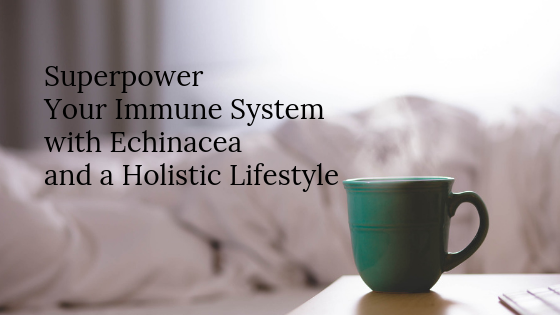
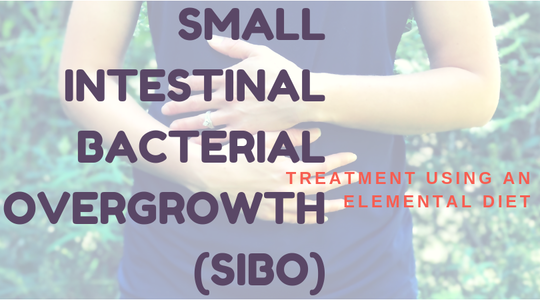
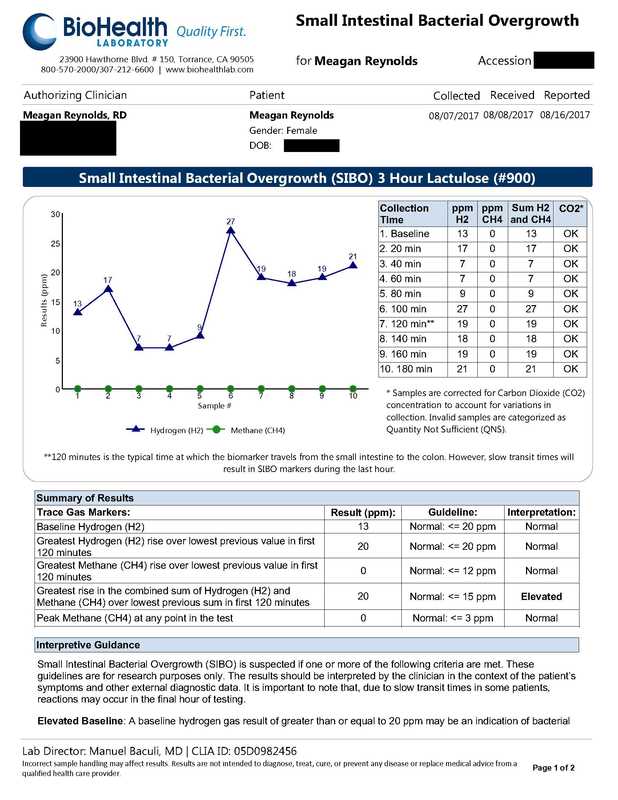
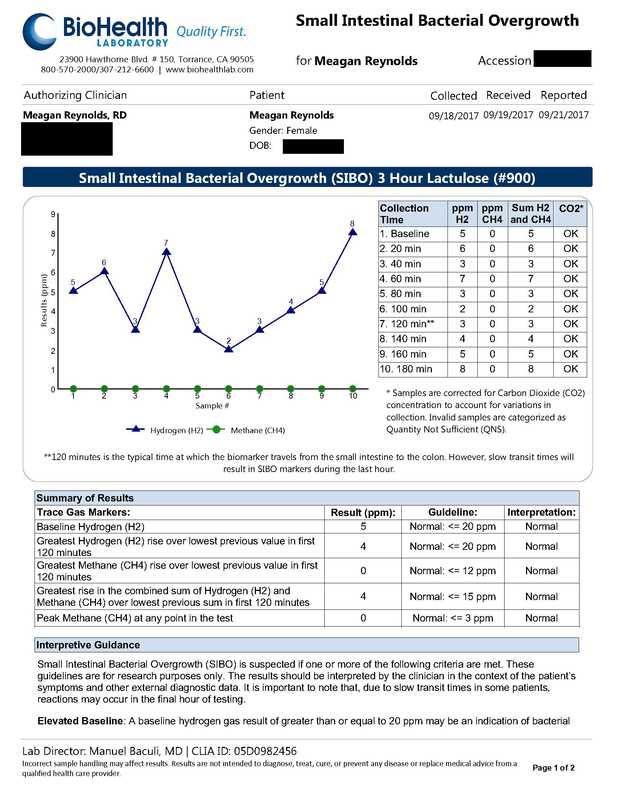


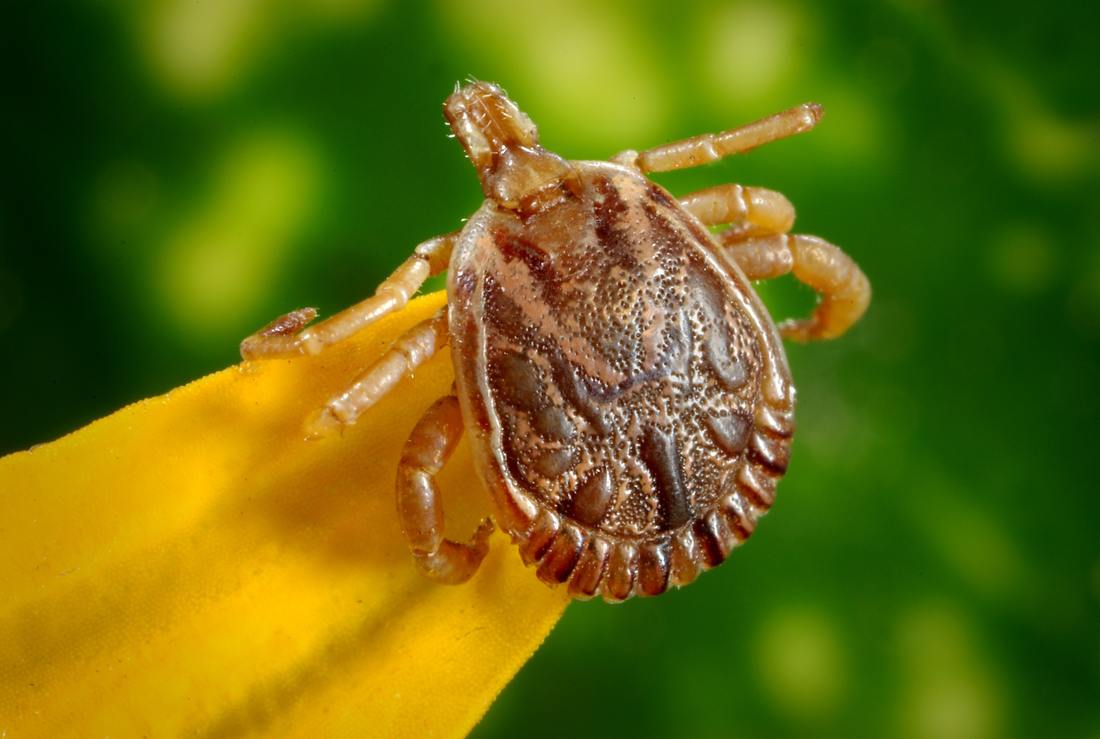

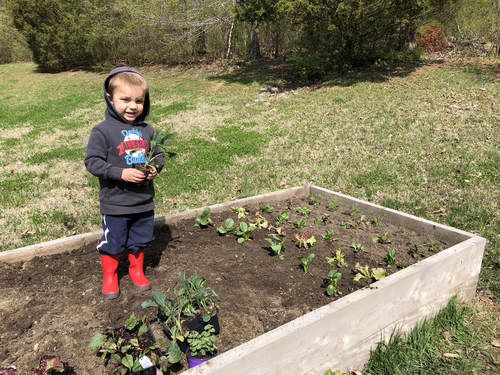




 RSS Feed
RSS Feed